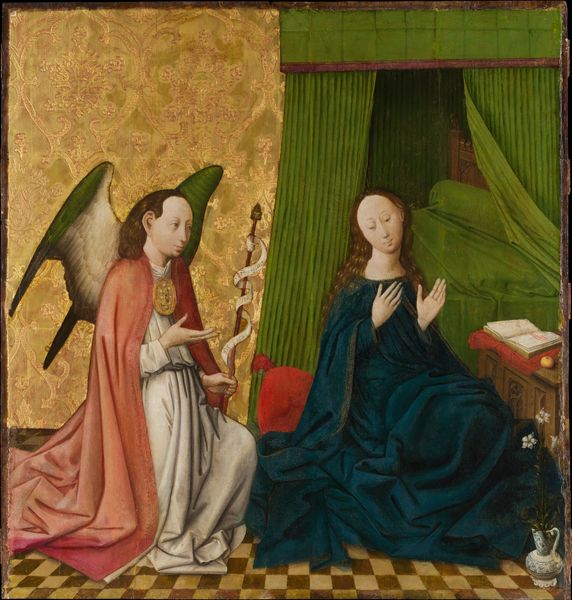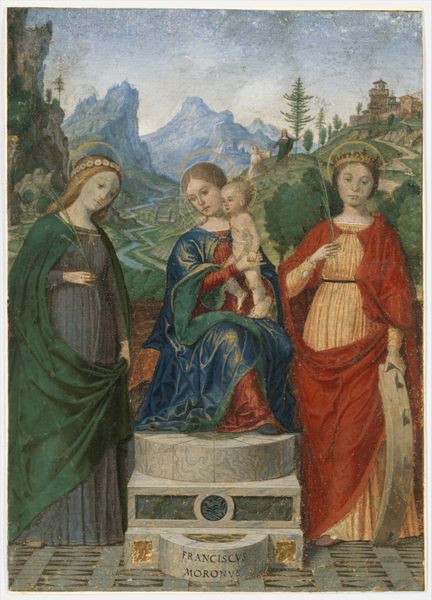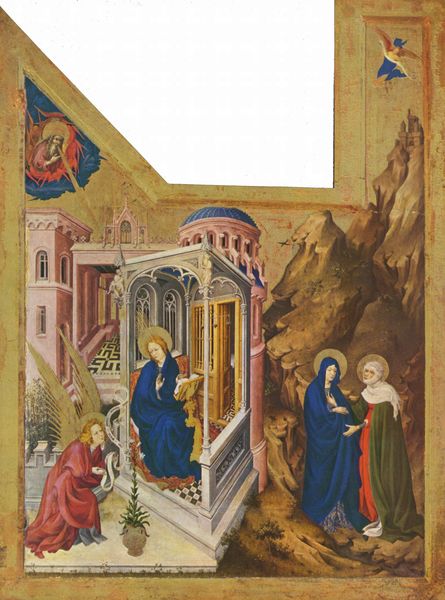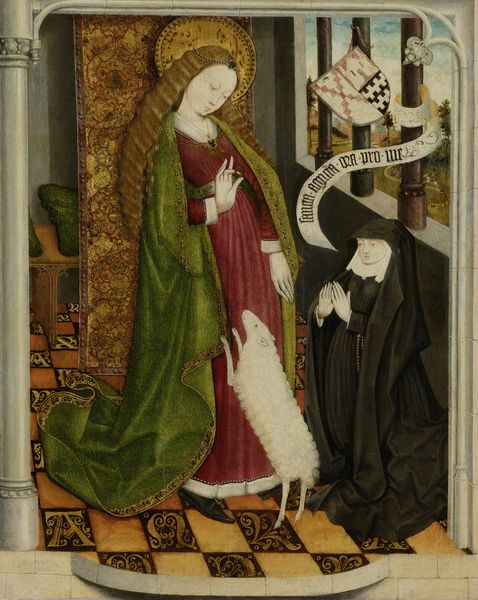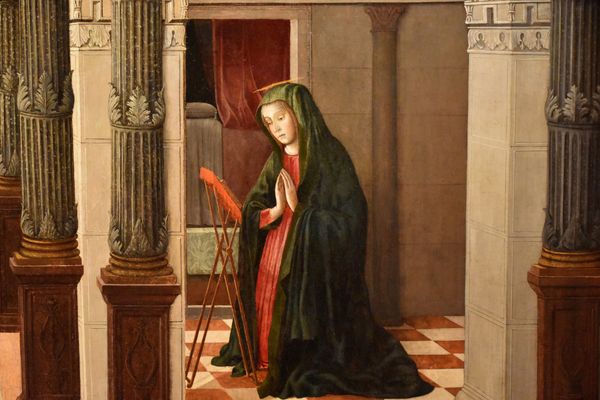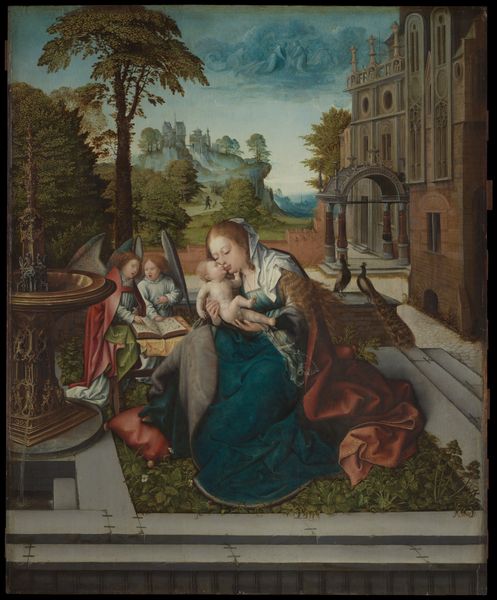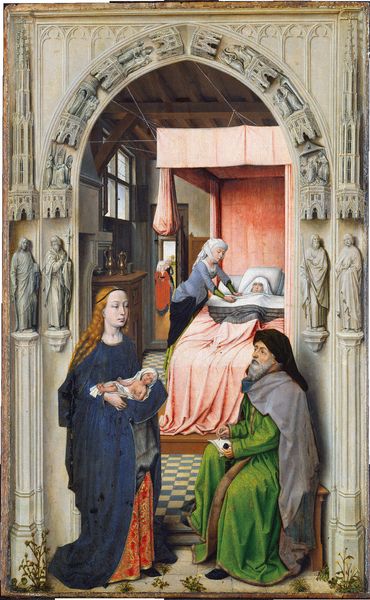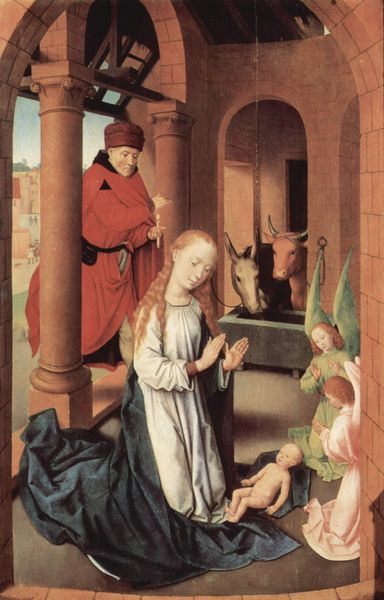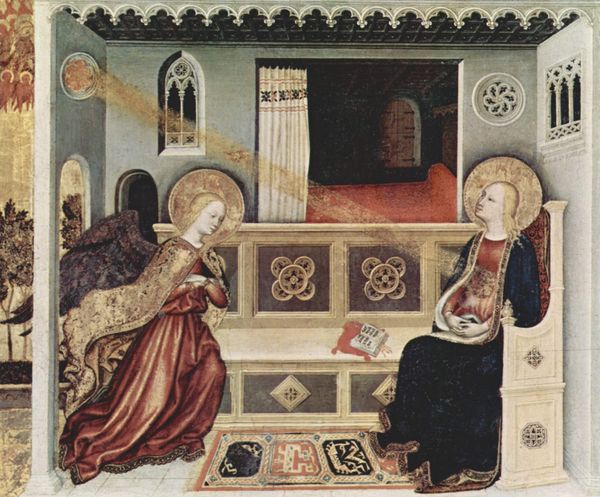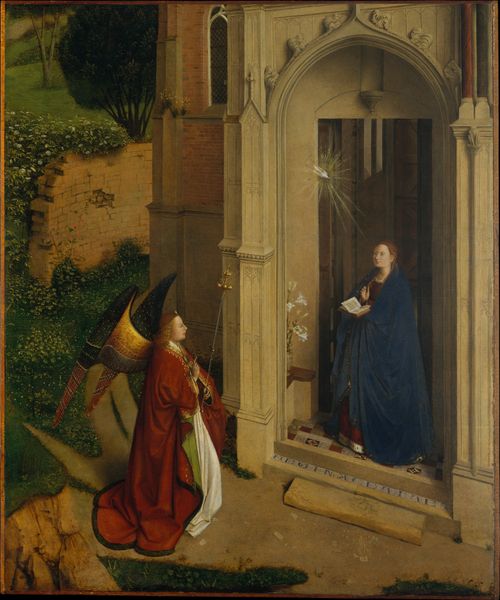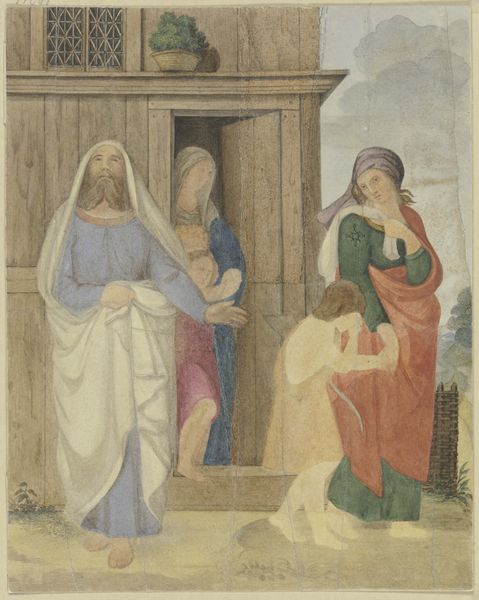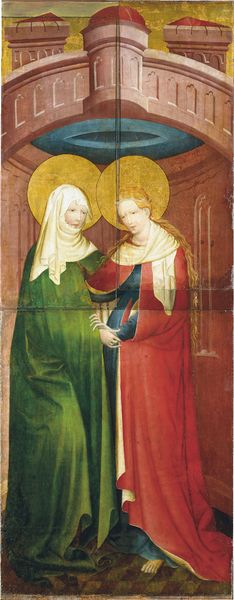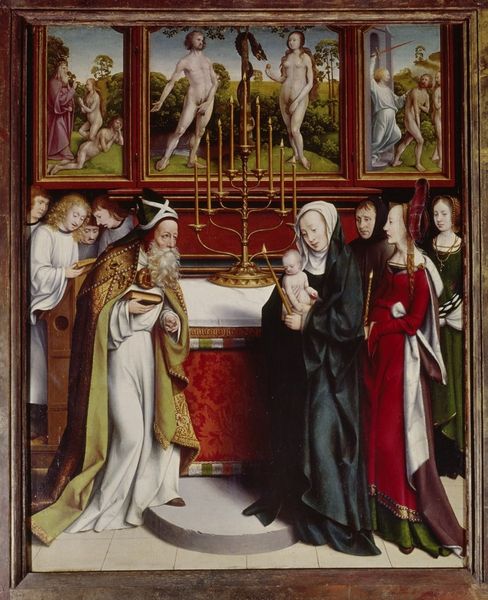
painting, oil-paint
#
narrative-art
#
painting
#
oil-paint
#
figuration
#
italian-renaissance
#
early-renaissance
#
virgin-mary
#
angel
Dimensions: Overall 16 1/4 x 14 5/8 in. (41.3 x 37.1 cm); painted surface 16 x 14 1/8 in. (40.6 x 36 cm)
Copyright: Public Domain
Curator: Alesso di Benozzo's "The Annunciation," dating back to sometime between 1475 and 1505, is a striking example of early Renaissance art currently housed at the Metropolitan Museum of Art. Editor: The coolness of the palette immediately strikes me – the almost icy blues and muted reds create such a serene, otherworldly atmosphere, don’t you think? The whole thing feels suspended in time. Curator: Absolutely. The setting itself, an enclosed courtyard, places this pivotal biblical scene within a very specific cultural framework. We see the influence of humanist architecture, echoing the rise of Italian city-states and their architectural ambition. This is not just a religious scene, it's a statement about societal values too. Editor: The meticulous details – the dove representing the Holy Spirit, the angel's lily symbolizing purity, even the book in Mary's hands, all carry layers of meaning that resonate even now. Look at the snake winding away from the angel! It's fascinating how these symbols would have been instantly recognizable and deeply significant to viewers at the time. Curator: Precisely. The power dynamics are also key. The Virgin is portrayed in a setting suggesting domesticity, receiving an envoy from what we might interpret as a higher socio-political authority. That changes over the period in Italian city-states. Art during the renaissance period starts taking place less and less at the order of the church or nobility, and shifts increasingly toward art at the service of cities' ambitions. Editor: And I notice how the artist balances the ethereal with the tangible, anchoring this miraculous moment in a believable architectural space, but making the scene otherwordly through specific symbolic figures. It invites contemplation. The dove above reminds us of peace, and the lilies of new life and purity, a reminder of what goodness looks like for a contemporary audience as well. Curator: The "Annunciation," when you place it within the socio-political landscape of the period, acts not only as a piece of devotional iconography, but is also testament to a period where religious beliefs and the urban development went hand in hand, reinforcing cultural values about morality, faith, and civic virtue. Editor: So much to see! Thank you, that’s been a much more enriching view of this image!
Comments
No comments
Be the first to comment and join the conversation on the ultimate creative platform.

